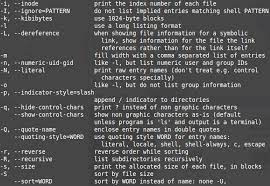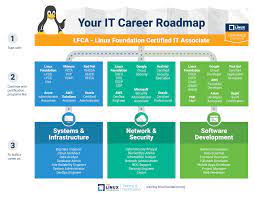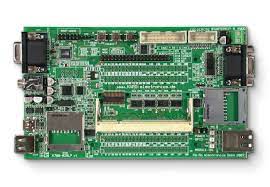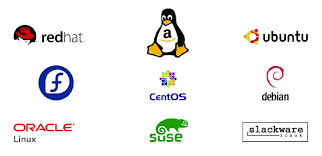Exploring the Diversity of Unix Distributions in the UK
The World of Unix Distributions
Unix, the powerful and versatile operating system, has a rich ecosystem of distributions that cater to a wide range of users and purposes. These distributions, often referred to as “flavours” or “variants,” offer different features, tools, and philosophies while staying true to the Unix principles of simplicity, modularity, and flexibility.
Popular Unix Distributions
One of the most well-known Unix distributions is Linux, which has various flavours such as Ubuntu, Fedora, and Debian. These distributions are widely used in both personal and enterprise environments due to their stability, security features, and extensive software repositories.
FreeBSD is another prominent Unix distribution known for its focus on performance and scalability. It is commonly used in server environments where reliability and performance are crucial.
OpenBSD, with its emphasis on security and code correctness, is favoured by security professionals and those who prioritise robustness in their systems.
Diverse Use Cases
Unix distributions are utilised in a variety of settings, from servers running critical infrastructure to desktops powering creative workstations. Each distribution caters to specific use cases:
- Servers: Unix distributions like CentOS and Red Hat Enterprise Linux are popular choices for server deployments due to their stability and long-term support.
- Desktops: Ubuntu and Fedora offer user-friendly desktop environments with extensive software libraries for productivity, entertainment, and development purposes.
- Embedded Systems: Lightweight distributions such as Alpine Linux are ideal for embedded devices where resource efficiency is paramount.
The Unix Philosophy
Regardless of the specific distribution chosen, all Unix variants adhere to the fundamental principles laid out by the original creators of Unix:
- “Do one thing well.”
- “Make each program do one thing well.”
- “Build a prototype as soon as possible.”
- “Choose portability over efficiency.”
- “Use shell scripts to increase leverage and portability.”
This philosophy underpins the design of Unix distributions, ensuring that they remain efficient, modular, and adaptable to diverse computing needs.
In Conclusion
The world of Unix distributions offers a plethora of options for users seeking powerful, reliable operating systems that align with the ethos of open-source development. Whether you are a seasoned system administrator or an aspiring developer exploring new horizons, there is a Unix distribution tailored to meet your requirements. Dive into this vibrant ecosystem and discover the endless possibilities that Unix has to offer!
Top 5 Advantages of Unix Distributions: Stability, Security, and More
- Robust and Stable
- Security-Focused
- Extensive Software Repositories
- Flexibility and Customisation
- Community Support
Challenges of Using Unix Distributions: Key Cons to Consider
- Steep learning curve for beginners unfamiliar with Unix command line interface.
- Compatibility issues with certain proprietary software and hardware drivers.
- Limited gaming support compared to mainstream operating systems like Windows.
- Varied community support levels across different Unix distributions.
- Potential lack of user-friendly graphical interfaces in some minimalist distributions.
- Less commercial software availability compared to popular operating systems.
Robust and Stable
Unix distributions excel in providing robust and stable operating systems, making them the preferred choice for critical server environments. The inherent reliability of Unix distributions ensures uninterrupted operation and minimal downtime, crucial factors in maintaining the integrity and performance of server systems. With a strong emphasis on stability, Unix distributions offer a solid foundation for handling mission-critical tasks with efficiency and resilience, earning them the trust of system administrators and businesses alike.
Security-Focused
Many Unix distributions place a strong emphasis on security, with a focus on implementing advanced features to safeguard against vulnerabilities and threats. By prioritising security measures, Unix distributions provide users with a robust and secure computing environment, ensuring that sensitive data and systems are protected from potential risks. This commitment to security underscores the reliability and trustworthiness of Unix distributions, making them a preferred choice for users who value data protection and system integrity.
Extensive Software Repositories
Unix distributions offer a significant advantage through their extensive software repositories, which serve as treasure troves of diverse applications and tools. These repositories empower users to effortlessly discover, install, and maintain software packages tailored to their specific needs. Whether you are a developer seeking programming libraries, a creative professional looking for design tools, or a system administrator in need of server utilities, Unix distributions’ vast repositories ensure that you have access to a wide array of software at your fingertips. This convenience streamlines the process of software management and enhances the overall user experience within the Unix ecosystem.
Flexibility and Customisation
The flexibility and customisation offered by Unix distributions empower users to tailor their operating system to precisely meet their unique requirements. The modular nature of Unix systems allows users to select and integrate only the components and functionalities they need, enhancing efficiency and performance. Whether configuring a server for optimal performance or personalising a desktop environment for productivity, Unix distributions provide the freedom to create a bespoke computing experience that aligns perfectly with individual preferences and workflows.
Community Support
The vibrant community surrounding Unix distributions provides a significant advantage in the form of robust community support. Users can benefit from a wealth of knowledge, resources, and collaboration opportunities within these communities. Whether seeking troubleshooting assistance, exploring new tools and applications, or engaging in discussions about best practices, the Unix community offers a supportive environment where users can learn, grow, and contribute to the collective knowledge base. This strong sense of community fosters a spirit of collaboration and mutual assistance that enhances the overall user experience with Unix distributions.
Steep learning curve for beginners unfamiliar with Unix command line interface.
One significant drawback of Unix distributions is the steep learning curve they present for beginners who are unfamiliar with the Unix command line interface. Navigating the command line, understanding shell scripting, and mastering system administration tasks can be daunting for those accustomed to graphical user interfaces. The reliance on terminal commands for various operations may pose a challenge for new users seeking to harness the full potential of Unix distributions. However, with dedication, practice, and access to resources such as tutorials and community support, beginners can gradually overcome this hurdle and unlock the vast capabilities offered by Unix systems.
Compatibility issues with certain proprietary software and hardware drivers.
One significant drawback of Unix distributions is the potential compatibility issues that arise when using certain proprietary software and hardware drivers. Due to the open-source nature of Unix systems, some proprietary applications may not be fully compatible or optimised for these platforms, leading to functionality limitations or performance issues. Similarly, hardware drivers developed by manufacturers for specific operating systems may not always have Unix support, resulting in challenges when trying to utilise certain peripherals or devices with Unix-based systems. These compatibility hurdles can pose obstacles for users who rely on proprietary software or require specific hardware configurations, highlighting a limitation within the otherwise versatile Unix ecosystem.
Limited gaming support compared to mainstream operating systems like Windows.
One notable drawback of Unix distributions is their limited gaming support in comparison to mainstream operating systems like Windows. While significant progress has been made in recent years to improve compatibility and performance for gaming on Unix platforms through tools like Proton and Wine, the availability of native games and support for popular gaming hardware remains a challenge. This disparity can deter gamers who rely on a wide range of titles and seamless gameplay experiences that are more readily accessible on Windows, highlighting the need for further development and collaboration within the Unix community to bridge this gap.
Varied community support levels across different Unix distributions.
One notable drawback of Unix distributions is the inconsistency in community support levels across different variants. While some distributions benefit from active and robust communities that provide timely assistance, updates, and documentation, others may struggle to maintain the same level of support. This variance in community engagement can lead to disparities in user experience, with some users facing challenges in troubleshooting issues or accessing resources compared to those using distributions with stronger community backing. As a result, users may need to carefully consider the availability of support when selecting a Unix distribution to ensure they receive the necessary help and guidance for their computing needs.
Potential lack of user-friendly graphical interfaces in some minimalist distributions.
Some minimalist Unix distributions may present a drawback in the form of a potential lack of user-friendly graphical interfaces. While these distributions excel in efficiency and resource optimisation, users accustomed to intuitive graphical environments may find themselves facing a steeper learning curve. Navigating through command-line interfaces and configuring system settings manually could pose challenges for those seeking a more visually-oriented computing experience. However, for users willing to embrace the simplicity and control offered by minimalist distributions, this trade-off may be outweighed by the performance benefits and customisation options available.
Less commercial software availability compared to popular operating systems.
One significant drawback of Unix distributions is the limited availability of commercial software in comparison to more mainstream operating systems. Due to the niche market share of Unix-based systems, software developers often prioritise creating applications for widely-used platforms such as Windows and macOS. This disparity in commercial software support can pose challenges for Unix users who rely on specific proprietary applications for their work or personal needs, potentially requiring them to seek alternative solutions or utilise compatibility layers to run non-native software on Unix distributions.






